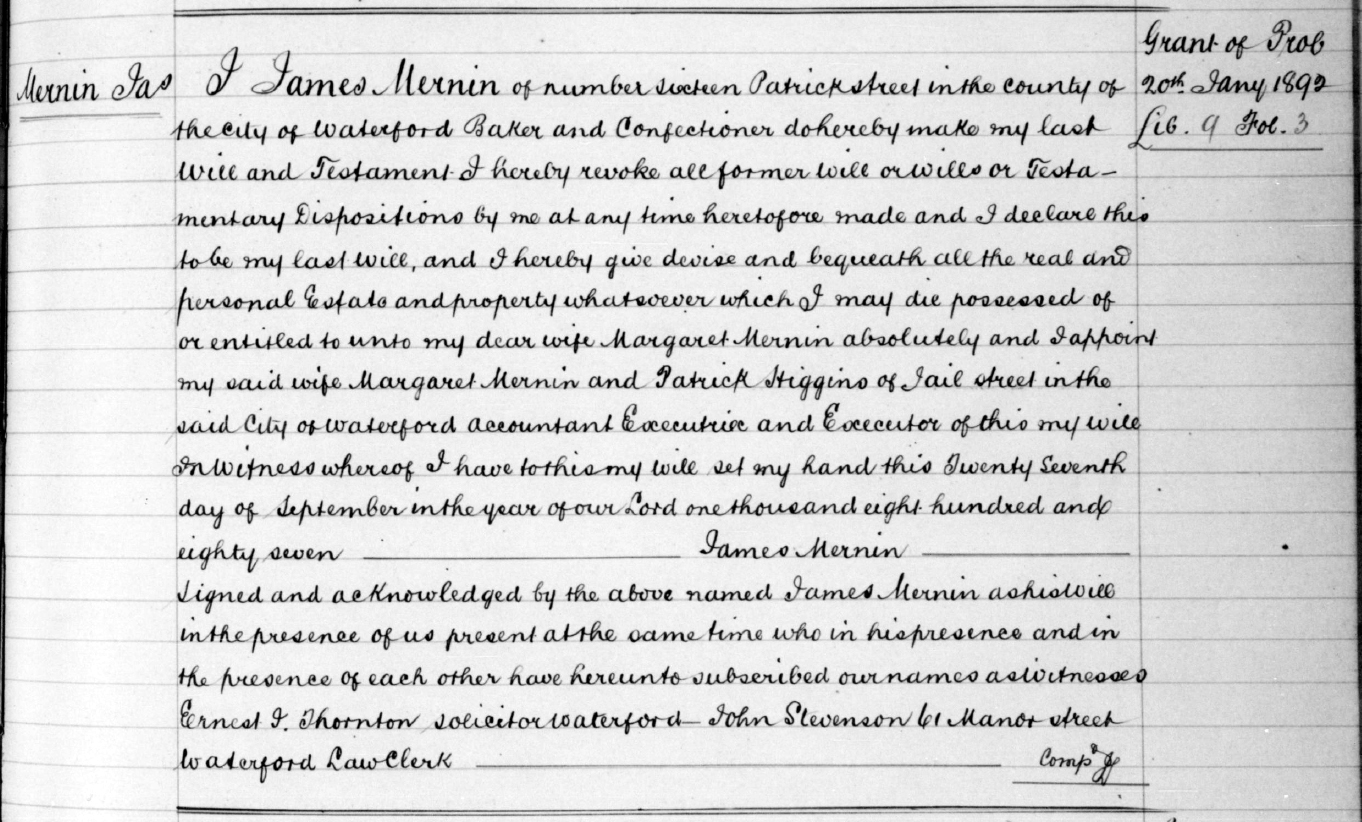The Irish Registry of Deeds
THE SCOPE OF THE RECORDS
Research in the Registry of Deeds can be laborious and time-consuming, so it is a good idea to be aware of the limitations of its records before starting work either onsite or with the collection of online images. The Registry was set up by the Irish Parliament in 1708 to help regularise the massive transfer of land ownership from the Roman Catholic, Anglo-Norman and Gaelic populations to the Protestant Anglo-Irish that had taken place over the preceding century. Its founding Statute says its purpose was 'for securing purchasers, preventing forgeries and fraudulent gifts and conveyances of lands, tenements and hereditaments, which have been frequently practised in this kingdom, especially by Papists, to the great prejudice of the Protestant interest thereof'. Registration of deeds was never obligatory, however. The function of the Registry was simply to provide evidence of legal title in the event of a dispute. These two facts--the voluntary nature of registration and the general aim of copperfastening the Cromwellian and Williamite confiscations--have determined the nature of the historical records held by the Registry. The overwhelming majority deal with property-owning members of the Church of Ireland, and a disproportionate number of these relate to transactions that carried some risk of legal dispute. In other words, the deeds registered are generally of interest only for a minority of the population and constitute only a fraction of the total number of property transactions carried out in the country.
The implications of these facts are worth spelling out in detail. Over the most useful period of the Registry's records, the non-Roman Catholic population of Ireland comprised, at most, a fifth of the total. A high proportion of these were dissenting Presbyterians, largely concentrated in the north and suffering restrictions on their property rights similar to, though not as severe as, those imposed on Catholics; very few deeds made by dissenting Protestants are registered. Of the remaining non-Roman Catholics the majority were small farmers, tradesmen or artisans, usually in a position of economic dependence on those with whom they might have property transactions and therefore in no position to dispute the terms of a deed. As a result, the records of the Registry cover only a small number of the non-Roman Catholic minority. There are exceptions, of course, for example large landlords who made and registered great numbers of leases with their smaller tenants; marriage settlements between families of relatively modest means; the business transactions of the small Catholic merchant class; or the registration of the holdings of the few surviving Catholic landowners after the relaxation of the Penal Laws in the 1780s. These are definitely exceptions, however, and for the vast bulk of the population--the Catholic tenant-farmers--the possibility of a deed having been registered can almost certainly be discounted, as they owned virtually nothing and had only tenuous legal rights to the property they occupied.
A further limit to the scope of the records is the scant use made of the Registry in its early years. It was only from about the 1740s that registration became widespread, and its major genealogical usefulness is for the century or so from then until the 1850s, when other sources become more widely available.

With these caveats in mind, it should now be said that for those who made and registered deeds, the records of the Registry can often provide superb information. The inclination to register deeds appears to have run in families: a single document can name two or three generations and can also lead back to a chain of related records that give a picture of the family's evolving fortunes and the network of its collateral relationships.
By 1832, 588,983 deeds had been registered and a hundred years later the total had risen to two and a quarter million. This is the single largest collection of Irish historic source material, undamaged by any of the archival disasters that struck other Irish records. Since 1805, the Registry has occupied one wing of James Gandon's King's Inns building in Henrietta Street. As well as searching onsite, it is now possible to access almost the entire collection online, as outlined in the 'Online access' section.